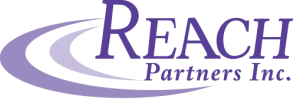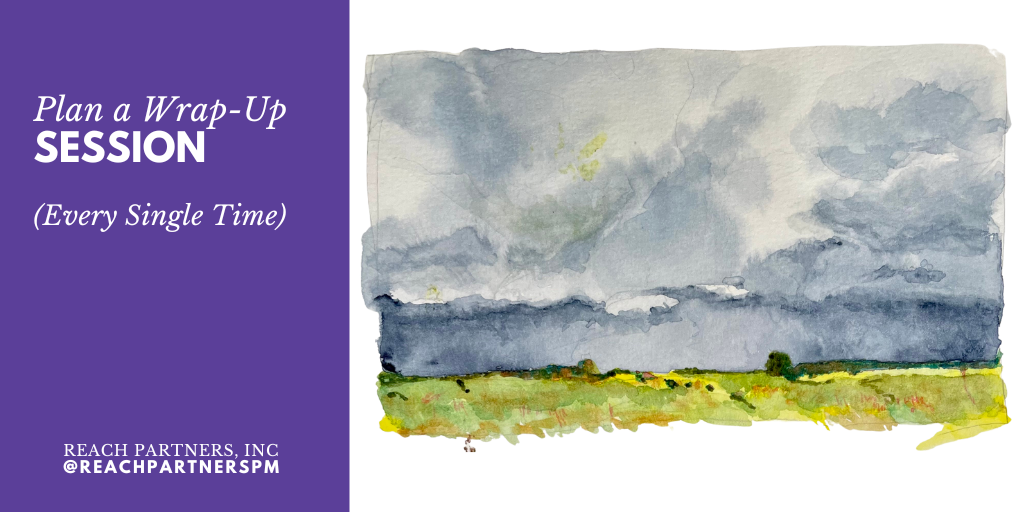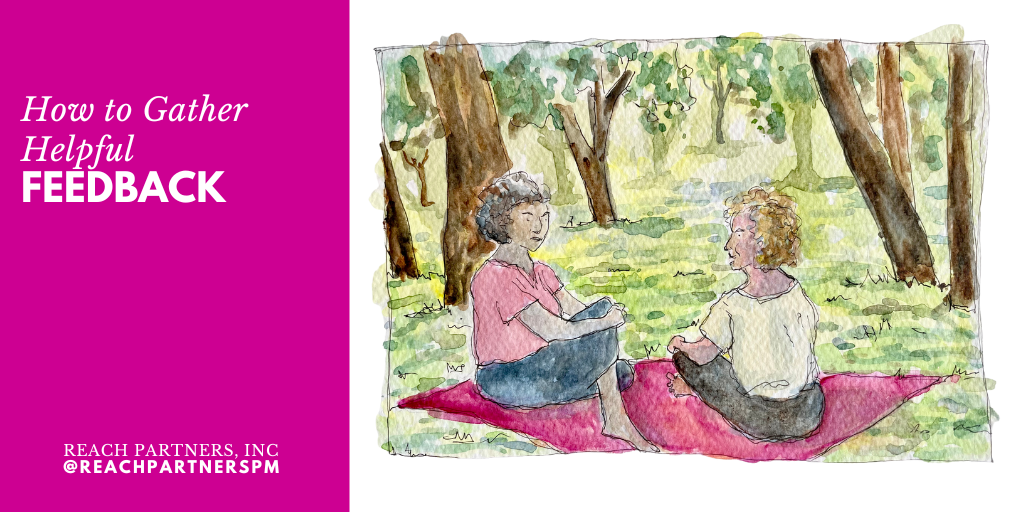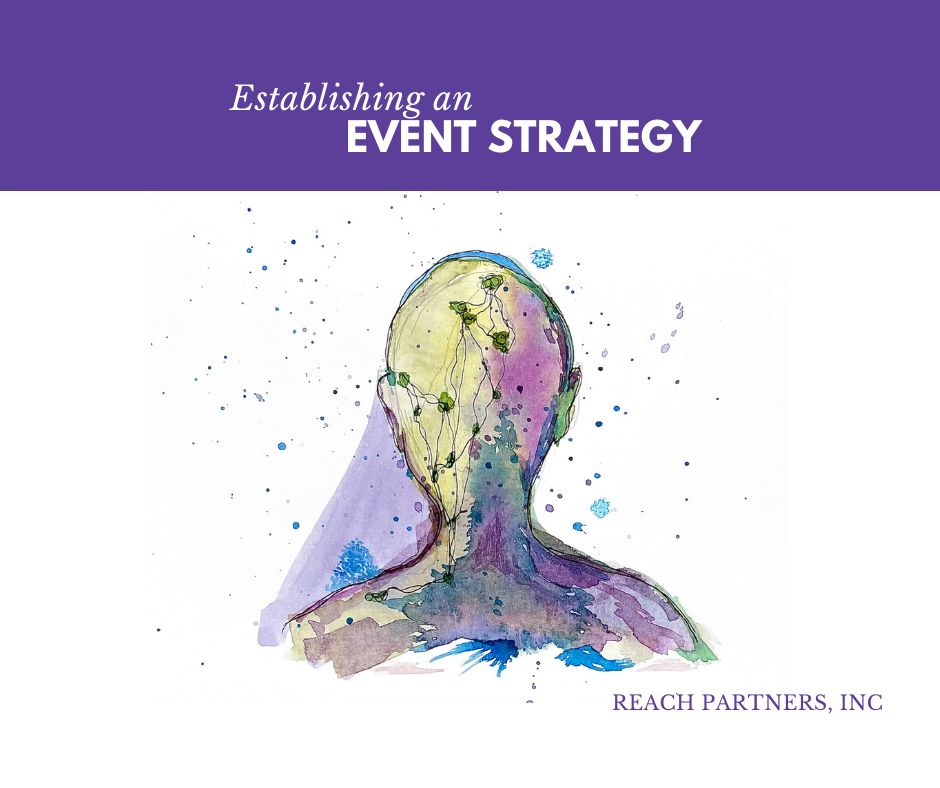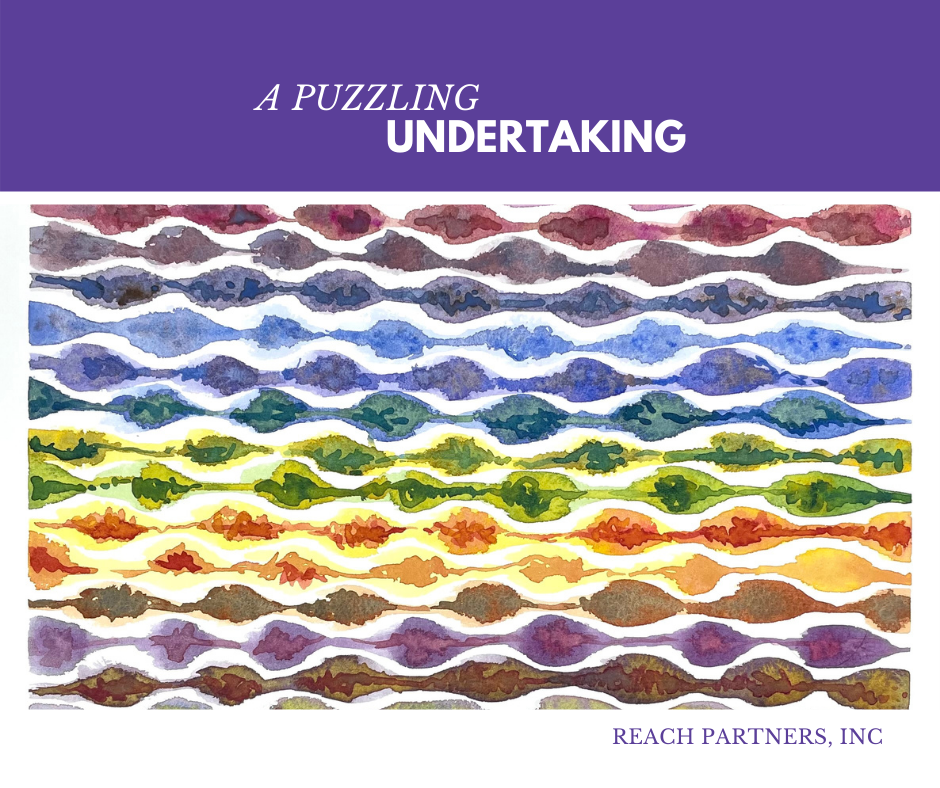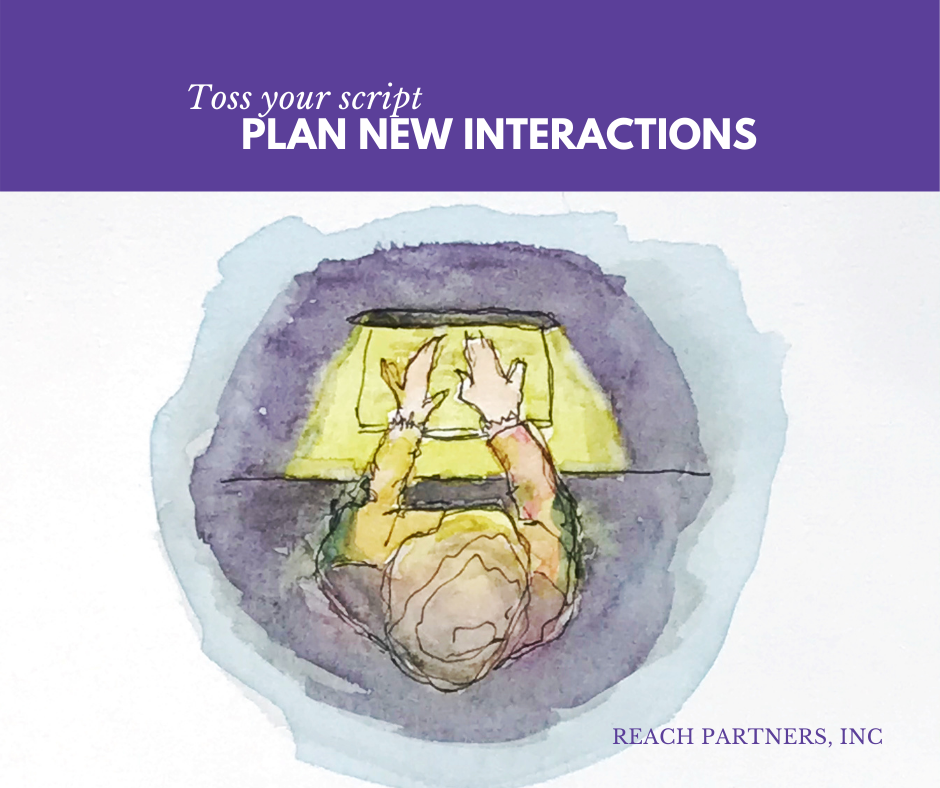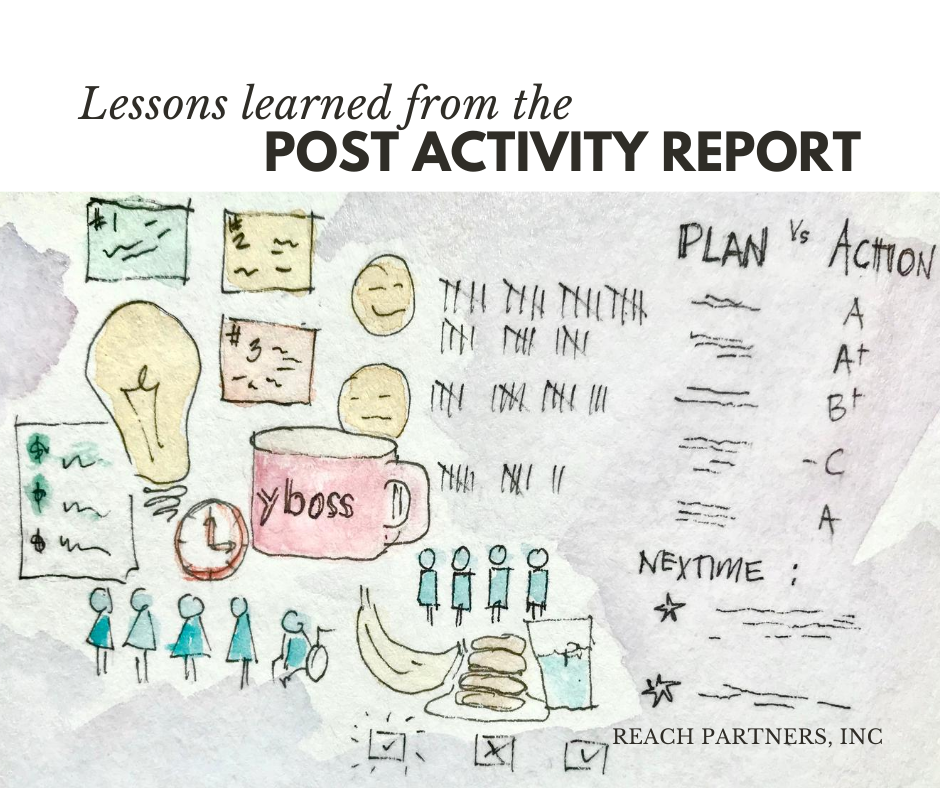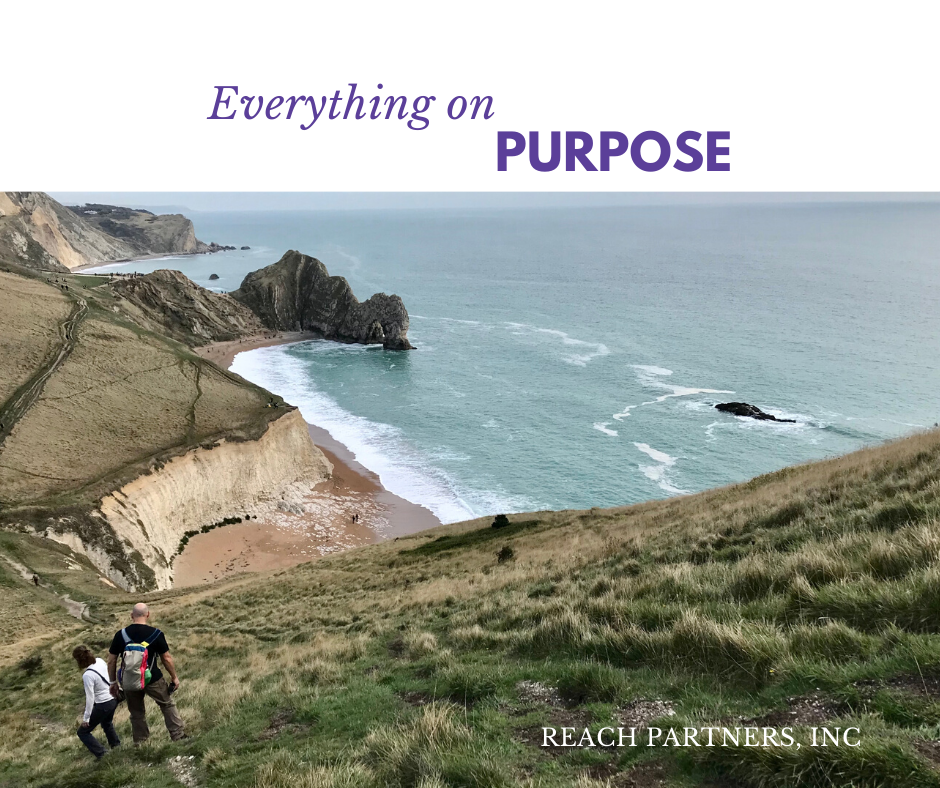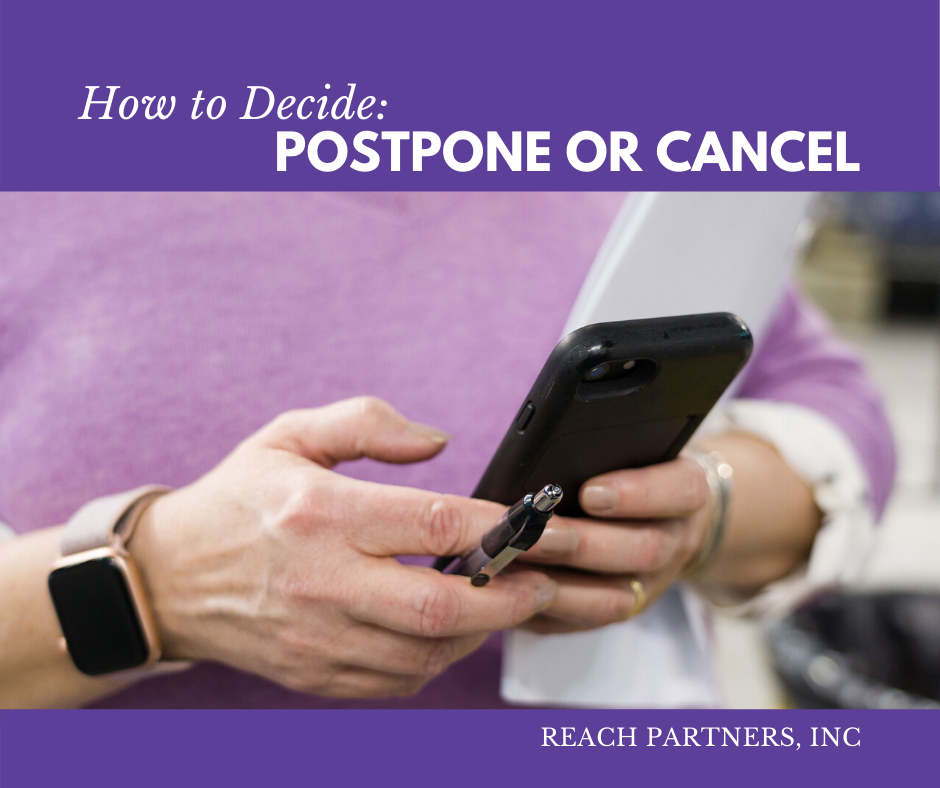|
Reach Partners knows the value of a wrap-up or lessons-learned meeting and how that can offer insight into future projects. We have talked about how best to present a Post Activity Report and who should be part of this kind of reflection.
But recently, someone asked whether it’s necessary to plan a wrap-up session when the event is never going to happen again. The short answer: yes. The longer answer, here’s why:
2 Comments
I was once invited to give feedback on an activity my child participated in. I’m confident the leaders had good intentions – after all, they asked parents to fill out a survey. But, I didn’t feel fulfilled after answering the questions. I didn’t understand why my input was needed. Was I helping to make the activity better for the next year? Was I understood?
You’ve likely found yourself in a similar situation. The experience prompted me to think deeper about why we need feedback and the best way to gather it. We talk a lot about communication. Mostly because it’s hard to do well, and it helps to keep stakeholders on the same page. But there’s something else that motivates us. Identifying the audience is one of the biggest challenges we face in communicating well. Who needs to hear a message? What do they need to know? When do they need to know it? Communication influences how an audience perceives a project or event. How and when you present a message is as important as the words or images you choose to share. Apply empathy and take time to figure out what your audience needs to know. There is one thing I never want to experience on the day of an event I’m managing: unnecessary stress.
Of course, there are ALWAYS last-minute issues that come up (hi, global pandemic!), but I’d rather pace stress over the many weeks and months of a planning period and not have to make 25,000 decisions when people are standing around not knowing where to go, what to do, or even why they’re there. This is one reason why Reach Partners establishes an event strategy document for every event or conference or workshop we manage. I hate puzzles.
Maybe it’s because I’ve always been frustrated by them. I remember once, as a child, trying to finish the puzzle of a hot air balloon. It was beautiful: a brilliant blue sky and the balloon was distinguished with bright colors of the rainbow. But it took forever to complete. The puzzle sat on the dining room table and I heard my mom tell more than one guest that they needed to place a piece before they left. I might have passed on my dislike of puzzles to my kids. One Christmas, I had a photo of the two of them turned into a puzzle. The pieces sat in a box for nearly two years before I made myself put it together. The puzzle wasn’t complicated; it was 25 pieces. But it wasn’t easy and certainly not fun. I threw it away. During the pandemic, I watched friends on Facebook safely exchange puzzles as their families used time together to puzzle (is puzzle even a verb?!). Yuck. Not me. Not my family. And yet, I solve puzzles at work all the time. Every time I piece together details of an event or a project, it’s a puzzle. Only recently did I figure out the difference. We at Reach Partners are big Priya Parker fans. We devoured her book “The Art of Gathering” and even attended an event curated by her.
So when Parker penned an opinion column that ran in The New York Time before Thanksgiving, we paid attention. Titled “Abandon Your Thanksgiving Script,” the column addressed the need to think differently about holiday traditions during a year when nothing has been normal. Parker challenged her readers to think imaginatively: “That begins with shifting our attitudes from fighting the current constraints to taking inspiration from them.” As someone who studies and designs gatherings, she most often sees two responses to constraints on gathering: cancellation and rebellion. She encourages a third option: improv. We’ve seen this play out in our own work and experiences over the last year. As we were working on conference details for a client, something didn’t feel quite right. I knew there was something that the client wanted to change from the previous year’s event. Unfortunately, I couldn’t remember exactly what it was. (In my defense, it had been over a year since we had planned that particular conference. That’s a long time to remember things!)
Thankfully, I knew exactly where I could find what I needed. The detail was included in our post activity report, also known as the PAR. Whenever we plan an event, an in-depth meeting, a social gathering, or virtual experience Reach Partners will always argue for the same thing. Every time.
This thing is the most important detail for every planned interaction. It is the life blood of our work and what drives us to do better every day. Most importantly it’s the power, the energy that fuels the work at hand. How do you tap into this energy? How do you make it work for you? Draw the right audience? Craft the right marketing activities? Align stakeholders? Create value? You start by defining purpose. Project managers are good at risk management.
One of the things we do is identify what we can’t control and then find solutions or actions to mitigate these things. Typically, this means we’re thinking through things like potentially bad weather affecting an outdoor event or how to contain a protester at a women’s event. These types of risk management plans are appropriate, necessary, and responsible. And then along came the coronavirus pandemic. We’re not going to lie – this challenges even those of us who spend a lot of time identifying and planning for risks. From the exquisite gala to the unglamorous gathering, we spend a lot of time at Reach Partners researching and thinking about the unsung aspects of events.
One question we ask every single time we design an event is essential. Why will (or should) a person attend the event? Time is a rare and limited resource. If we want someone to spend precious minutes at our gathering or get-together, we better understand and communicate why they should do so. At Reach, we always stress that purpose is the driver for any event. When that purpose is well defined, creatively and accurately articulated, it informs the language we use for everything else. It becomes part of the call to action – what we want our attendees to do. |
Reach PartnersYour partners in leadership. Categories
All
Archives
July 2024
|
|
|
Reach Partners, Inc
3330 Fiechtner Dr. Suite 100 Fargo, ND 58103-2321 701-271-8170 Copyright (C) 2024 Reach Partners Inc.
|
